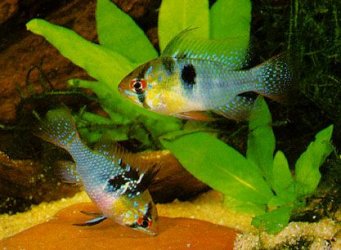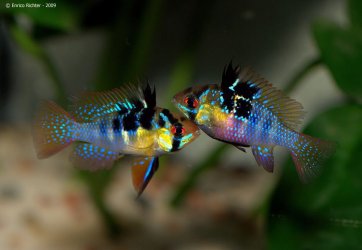A 10 gallon is not sufficient space for blue rams. This fish needs a 24-inch length aquarium minimum, such as a 15 gallon or 20 gallon high. It is also a warm water species, with 80F (26 C) being minimum. Many of the "tropical" fish we keep will have difficulty managing in such warm water permanently, so selecting tank mates is more involved.
But going on from that, Betta (assuming a male) is not a community fish so it needs its own space. Danios are too active, aside from needing much cooler water. And guppies might work, but these being livebearers need moderately hard water. The hardness of the water for rams depends upon the source of the fish; wild caught Mikrogeophagus ramirezi must have very soft water. Commercially raised blue rams are best in water close to that in which they were spawned/raised which means knowing the breeder's water. All of the varieties (german blue, gold, etc) are commercially raised as none of these are natural wild forms but were developed from M. ramirezi.
The advice to establish the biology of the tank before adding the rams was sound. And just so others are not confused, we are talking established, not cycled, which are two very different things. A mature tank that has been running for a few months is (or should be) "established." Some fish will settle in better with fewer problems in established tanks, and rams are one of these.
I'll just mention it now in case you are not aware of it, but with rams you must ensure the male/female pair have selected each other and bonded. Any male and female may not accept each other, and if not, one will be dead before many weeks have passed.




